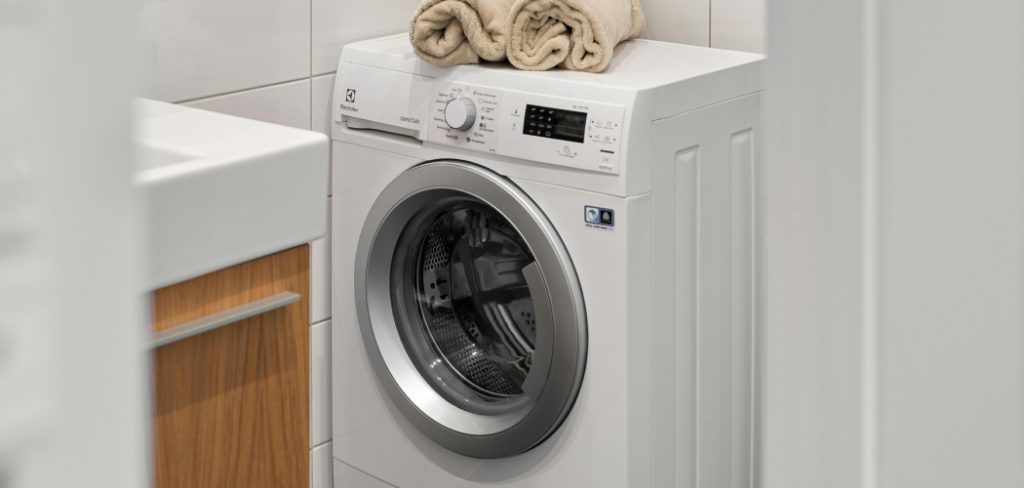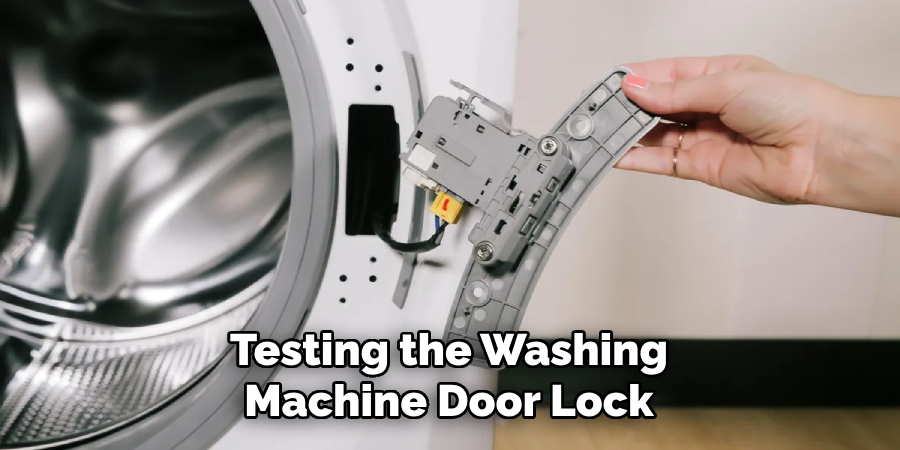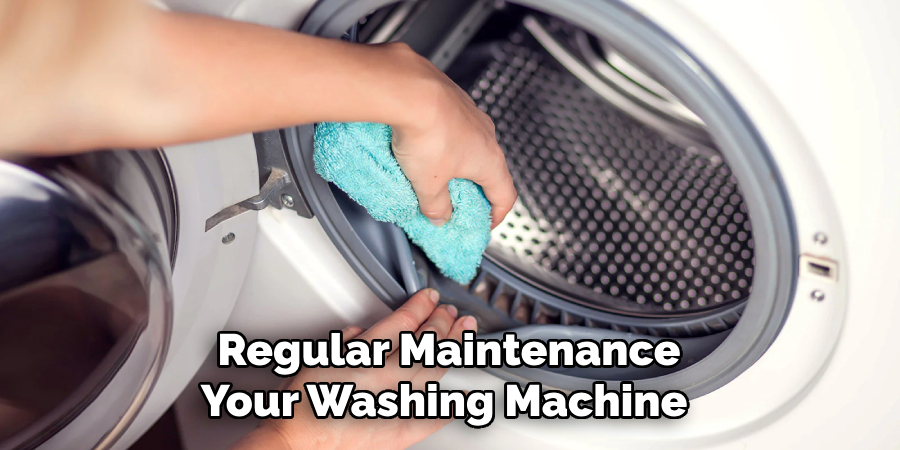The door lock on a washing machine is essential for both user safety and the proper functioning of the appliance. It prevents the door from being opened mid-cycle, which could result in water leakage or potential injury from the spinning drum.

Common issues that may necessitate fixing the lock include the door failing to lock, the machine not starting, or error messages appearing on the display.
These issues can stem from various sources, such as mechanical wear and tear or electrical faults within the lock mechanism itself.
This comprehensive guide on how to fix the lock on a washing machine will walk you through diagnosing the problem, gathering necessary tools, safely accessing the door lock, testing and replacing the faulty components, and making final adjustments.
By following these step-by-step instructions, you can troubleshoot and repair the door lock, restoring your washing machine to optimal working condition.
Diagnosing the Problem
Identifying the symptoms of a faulty door lock is the first step in troubleshooting this issue. Common signs include the washing machine door refusing to lock, the appliance failing to start a cycle, and persistent error codes or warning indicators on the machine’s display panel.
To gather more specific information, refer to the machine’s manual for error codes related to the door lock mechanism. Understanding the type of door lock your washing machine uses can also aid in diagnosing the problem.
Electromagnetic locks use electronic solenoids, while mechanical locks rely on physical components such as springs and latches.
Each type has its distinct failure points; for instance, electromagnetic locks can suffer from electrical malfunctions, while mechanical locks may experience wear and tear of moving parts.
By accurately identifying these symptoms and understanding the lock mechanism, you can pinpoint the root cause of the problem and proceed with the appropriate repairs.
Tools and Materials Needed
Before beginning the repair, ensure you have the following tools and materials on hand. Essential tools include a screwdriver for removing screws, a multimeter for testing electrical components, and pliers for pulling or holding parts.
You’ll also need materials such as a replacement door lock assembly to install a new lock and lubricant to ensure smooth operation of the door mechanism.
Optional items that may be useful include cleaning supplies to remove any debris or grime around the door area and a flashlight to illuminate dark or hard-to-see sections of the washing machine.
How to Fix the Lock on A Washing Machine: Repairing the Washing Machine Door Lock

Safety Precautions
Before starting any repairs on your washing machine, it is imperative to take proper safety measures. The first and foremost step is to unplug the washing machine from the power socket to eliminate any risk of electric shock.
Working with electrical components carries inherent dangers, and ensuring the machine is disconnected from power greatly reduces these risks. Avoid direct contact with electrical components, especially if unsure of their current state.
Wear protective gloves to prevent cuts or abrasions when handling sharp parts or tools. Finally, the repair area should be kept well-lit and organized to minimize the risk of accidents or mishandling of parts.
By adhering to these safety precautions, you can carry out the repairs without endangering yourself or others.
Accessing the Door Lock
To access the door lock of your washing machine, you’ll first need to locate the door lock assembly. Typically, this assembly is situated adjacent to the door seal on the inner side of the door frame.
Start by carefully removing the door seal or trim, which may involve unscrewing, unclipping, or pulling it away from its seating. Pay attention to how these components are initially placed, as you’ll need to reassemble them later.
Use a small flathead screwdriver or a similar tool to assist in prying off the trim without causing damage. Once the door seal or trim is removed, you’ll have a lock mechanism clearer view of the lock mechanism.
Ensure the area around the lock is clean and debris-free, which could obstruct the repair process. Accessing the door lock is essential before you can proceed with testing and replacement.
Testing the Door Lock
With the door lock assembly accessible, you can begin to test its functionality. Using a multimeter, the device is set to measure continuity. Place the multimeter probes on the solenoid or switch terminals of the door lock to check for continuity; a lack thereof typically indicates a faulty lock.
Next, test the voltage supply by setting the multimeter to the appropriate voltage range and connecting it to the lock’s power supply terminals while the machine operates. This helps ensure the lock is receiving the correct voltage.
Interpret your test results to pinpoint whether the issue lies in the lock or another component in the circuit. Accurate diagnostics will guide you in proceeding with either repairs or replacement.

How to Fix the Lock on A Washing Machine: Replacing the Door Lock
Once you’ve determined the door lock is faulty, replace it. Begin by removing the mounting screws or clips that secure the lock in place. Carefully unscrew or unclip these components without losing any small parts.
Disconnect the electrical connectors or wires attached to the old lock, paying attention to the configuration for proper reconnection. Install the new door lock assembly by securing it with the mounting screws or clips, ensuring it is firmly in place.
Reconnect the electrical connectors or wires following the manufacturer’s instructions, ensuring tight and secure contacts. Finally, reassemble the door seal or trim and test the washing machine to confirm that the new lock is functioning correctly.
Replacing the door lock will restore your washing machine’s functionality, ensuring it operates safely and efficiently.
Adjustments and Calibration
After installing a new door lock in your washing machine, it’s crucial to make necessary adjustments and calibrations to ensure proper functioning. Begin by aligning the door lock correctly with the door latch mechanism.
Misalignment can prevent the door from locking securely, leading to operational issues or safety concerns. If the door lock and latch do not align perfectly, you may need to adjust the strike plates or latch hooks.
Examine these components and make minor modifications to their positions to ensure they engage correctly when the door closes. Tighten any loose screws and confirm that all parts move smoothly and without obstruction.
Calibrating the Door Lock
Ensuring the new door lock is aligned properly with the door latch mechanism is vital for efficient operation. Check that the lock mechanism correctly aligns with the latch each time you close the door.
Adjust the strike plates or latch hooks as necessary to achieve proper engagement. This might involve loosening screws, repositioning components, and retightening them to maintain a secure fit.
Proper calibration ensures that the door lock engages seamlessly and releases without issues, providing reliable operation of your washing machine.
Testing and Troubleshooting

Testing the washing machine is the final step to ensure the door locks and unlocks correctly. Run a short cycle with an empty washing machine to monitor the performance of the door lock.
Check for any error codes or malfunctions during operation, indicating potential lock or alignment issues. If any problems arise, make final adjustments to optimize door lock performance. This may involve fine-tuning the alignment of the lock and latch or reseating electrical connections. By
Maintenance Tips
Regular maintenance is essential to keep your washing machine in optimal working condition. Start by regularly cleaning the door seal and latch to prevent the buildup of debris, which can obstruct the door lock mechanism.
Inspect the door lock components for signs of wear or malfunction and replace them promptly to avoid operational issues. Always follow the manufacturer’s guidelines for routine maintenance and care, which may include periodic checks and cleaning schedules.
Adhering to these tips ensures the longevity and reliability of your washing machine, reducing the risk of unexpected repairs.
Frequently Asked Questions:
How Do I Know if My Washing Machine Door Lock Is Faulty?
Common signs of a faulty door lock include the washing machine not starting, the door not locking or unlocking properly, or error codes appearing on the display panel. Testing with a multimeter can confirm if the lock is malfunctioning by checking for continuity and correct voltage supply.
Can I Replace the Door Lock Myself?
Yes, you can replace the door lock yourself with the proper tools and precautions. Ensure that the washing machine is unplugged, follow the steps for accessing and removing the door lock, and carefully install the new part as outlined in the guide above.
What Tools Do I Need to Replace the Door Lock?
You will typically need a screwdriver, a small flathead screwdriver for prying off the trim, and a multimeter to test the lock’s functionality. Always check the manufacturer’s instructions for any specific tools required for your washing machine model.
How Often Should I Perform Maintenance on My Washing Machine Door Lock?
Inspecting and cleaning the door lock mechanism and seal at least every few months is a good practice. Regular maintenance helps prevent debris buildup and ensures the lock components function smoothly.
Why Is My Washing Machine Door Not Aligning Properly with The New Lock?
If the door is not aligning correctly with the new lock, you may need to adjust the strike plates or latch hooks to ensure proper engagement. This can involve loosening and repositioning the components until they align correctly.
What Should I Do if I Still Encounter Issues After Replacing the Door Lock?

If you continue to experience problems after replacing the door lock, double-check the alignment and electrical connections. If issues persist, consider consulting a professional technician to assess and resolve the problem.
Conclusion
In summary, knowing how to fix the lock on a washing machine involves a few key steps: accessing the door lock, testing it with a multimeter for continuity and voltage supply, and replacing it if found faulty.
Once the new lock is installed, making necessary adjustments and calibrations ensures the door lock mechanism operates smoothly. After the repair, a test cycle helps confirm the proper functionality of the new lock.
Consistent maintenance, such as cleaning the door seal and checking the lock components for wear, is crucial in extending the washing machine’s lifespan and ensuring efficient performance.
However, for complex issues and electrical repairs, seeking professional help is advisable to avoid potential risks and further damage. By following these guidelines and prioritizing proper maintenance, you can keep your washing machine running reliably for years to come.
